4 The Writing Process
THE WRITING PROCESS
Defining the Writing Process
On the surface, nothing could be simpler than writing: You sit down, you pick up a pen or open a document on your computer, and you write words. But anyone who has procrastinated or struggled with writer’s block knows that the writing process is more arduous, if not somewhat mysterious and unpredictable.
People often think of writing in terms of its end product—the email, the report, the memo, essay, or research paper, all of which result from the time and effort spent in the act of writing. In this course, however, you will be introduced to writing as the recursive process of planning, drafting, and revising.
Writing is Recursive
You will focus as much on the process of writing as you will on its end product (the writing you normally submit for feedback or a grade). Recursive means circling back; and, more often than not, the writing process will have you running in circles. You might be in the middle of your draft when you realize you need to do more brainstorming, so you return to the planning stage. Even when you have finished a draft, you may find changes you want to make to an introduction. In truth, every writer must develop his or her own process for getting the writing done, but there are some basic strategies and techniques you can adapt to make your work a little easier, more fulfilling and effective.
Developing Your Writing Process
The final product of a piece of writing is undeniably important, but the emphasis of this course is on developing a writing process that works for you. Some of you may already know what strategies and techniques assist you in your writing. You may already be familiar with prewriting techniques, such as freewriting, clustering, and listing. You may already have a regular writing practice. But the rest of you may need to discover what works through trial and error. Developing individual strategies and techniques that promote painless and compelling writing can take some time. So, be patient.
Prewriting Techniques
Brainstorming
Brainstorming is a technique of listing as many ideas as possible about your writing topic. The greatest rule of brainstorming is to keep the process as broad and open as possible. This video suggests several brainstorming techniques.
Mindmapping
Mindmapping is similar to brainstorming, but it is much more visual. It allows you to create connections between ideas. It can be a useful step after brainstorming, or it may match your style better if brainstorming seems too random. This video provides a good overview:
Freewriting
Freewriting is a process of simply writing. It helps you get started and can expand your thinking. Watch this video to learn more about this technique:
Audience
Each time you communicate, in writing or otherwise, you consider whom you’re communicating with and why, whether you’re conscious of this or not. Think about it: if you’re asking your best friend for a favor, aren’t you going to ask differently than if you were asking your boss for a raise? You already have a great instinct for knowing how to shape language around the people you are addressing and what your goal is. So how can you use this instinct when writing for your college classes?
. . . . . . . . . . . . . . .
A roaring political rally, a studio audience, dancing concert goers—these are all examples of different types of audiences, but an audience for your writing is a bit different. All audiences have a job to do: they are consumers of information or experiences. So when you set out to write, deciding who your audience is, is an important first step.
What is the Difference between an Audience and a Reader?
Great question! It’s as simple as this: your audience is the person or group whom you intend to reach with your writing. A reader is just someone who gets their hands on your beautiful words. The reader might be the person you have in mind as you write, the audience you’re trying to reach, but they might be some random person you’ve never thought of a day in your life. You can’t always know much about random readers, but you should have some understanding of who your audience is. It’s the audience that you want to focus on as you shape your message.
Isn’t my instructor my audience?
Sometimes your instructor will be your intended audience, and your purpose will be to demonstrate your learning about a particular topic to earn credit on an assignment. Other times, even in your college classes, your intended audience will be a person or group outside of the instructor or your peers. This could be someone who has a personal interest in or need to read about your topic but who may never actually read your work unless it finds a place to be published like a blog or website. Understanding who your intended audience is will help you shape your writing.
Here are some questions you might think about as you’re deciding what to write about and how to shape your message:
- What do I know about my audience? (age, gender, interests, biases, or concerns; Do they have an opinion already? Do they have a stake in the topic?)
- What do they know about my topic? (What does this audience notknow about the topic? What do they need to know?)
- What details might affect the way this audience thinks about my topic? (How will facts, statistics, personal stories, examples, definitions, or other types of evidence affect this audience? What kind of effect are you going for?)
Purpose
Often, you’ll know your purpose at the exact moment you know your audience because they’re generally a package deal:
- I need to write a letter to my landlord explaining why my rent is late so she won’t be upset. (Audience = landlord; Purpose = explaining/keeping her happy)
- I want to write a proposal for my work team to persuade them to change our schedule. (Audience = work team; Purpose = persuading/to get the schedule changed)
- I have to write a research paper for my environmental science instructor comparing solar to wind power. (Audience = instructor; Purpose = analyzing/showing that you understand these two power sources)
How Do I Know What My Purpose is?
Sometimes your instructor will give you a purpose like in the third example above, but other times, especially out in the world, your purpose will depend on what effect you want your writing to have on your audience. What is the goal of your writing? What do you hope for your audience to think, feel, or do after reading it? Here are a few possibilities:
- Persuade/inspire them to act or think about an issue from your point of view.
- Challenge them/make them question their thinking or behavior.
- Argue for or against something they believe or do/change their minds or behavior.
- Inform/teach them about a topic they don’t know much about.
- Connect with them emotionally/help them feel understood.
 Writing Exercise
Writing Exercise
Below you’ll find six pictures of people with some information about each person included. Choose two people to write letters to. The purpose of your letter writing is to ask these people to give you $100. Please follow these two rules: you cannot say you will pay the money back, because you won’t. You’re not asking for a loan. Also, you cannot lie or exaggerate about why you need the $100. Think of a real reason. We could all use $100, after all! With these parameters in mind, how will you manage to persuade these people to give you the money?
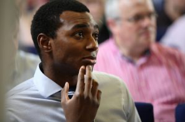
Figure 1
Jeremiah is the director of a non-profit organization that helps homeless youth get an education. He is thirty-three and is married with three small children. In his free time, Jeremiah enjoys practicing karate, hiking with his wife and kids, and reading historical fiction.
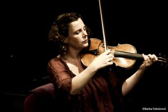
Figure 2
Deborah is a forty-year-old professional violinist who plays full time in the Portland Symphony Orchestra. She considers the orchestra to be her family. She isn’t married and doesn’t have children. When she’s not practicing her instrument, Deborah enjoys painting with acrylics and cross-country skiing.
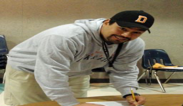
Figure 3
Ronaldo is a twenty-seven-year-old middle school biology teacher who also coaches track and field. He and his wife have just adopted two children from Haiti, so most of Ronaldo’s free time is spent reading parenting books and being the best father he can be.
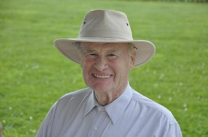
Figure 4
Henry is a retired CEO for a fishing rod manufacturing company. At the age of eighty-four, he still enjoys fly fishing all over the Pacific Northwest. He is recently widowed and has seven grandchildren who go fishing with him regularly.
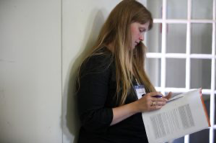
Figure 5
Michelle is a pediatric doctor who specializes in childhood leukemia. She is thirty-five and newly married to an ER doctor. They support each other’s research projects and other professional goals. They don’t want children, feeling that their work is their primary life focus.
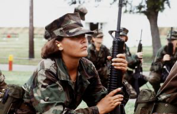
Figure 6
Grace is a twenty-year-old Marine in a family of Marines. She met her partner Jane during basic training, and they are planning to get married after they’ve both finished college. Grace’s hobbies include kickboxing, wakeboarding, and training her dog, Boss.
Photo Credits
Figure 1: “Listening at a conference” by BMA is licensed under CC BY-NC 2.0
Figure 2: “Barka Fabianova” by Cordella Hagmann is licensed under CC BY-NC-SA 2.0
Figure 3: “Slongood” by bidding is licensed under CC BY 2.0
Figure 4: “The Grandfather” by Xavez is licensed under CC BY-SA 2.0
Figure 5: “Waiting to Speak” by The BMA is licensed under CC BY-NC 2.0
Figure 6: “Expert Infantry” by DM-ST-86-05538 is licensed under CC BY 2.0
(adapted from Academic Writing I by Lisa Ford)

